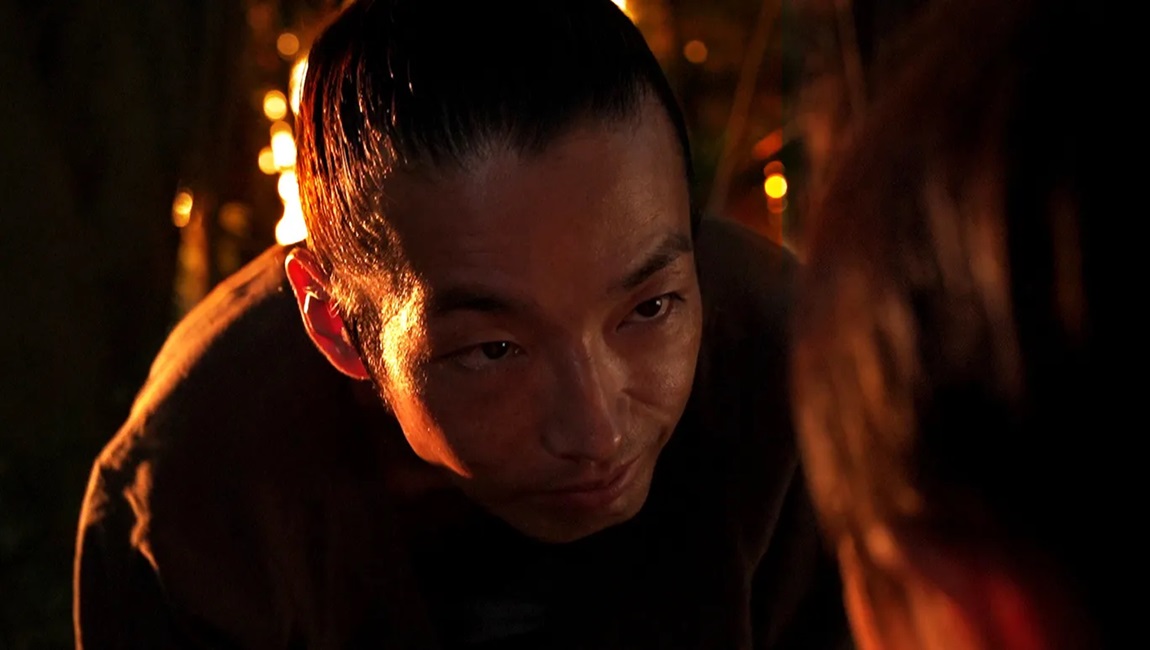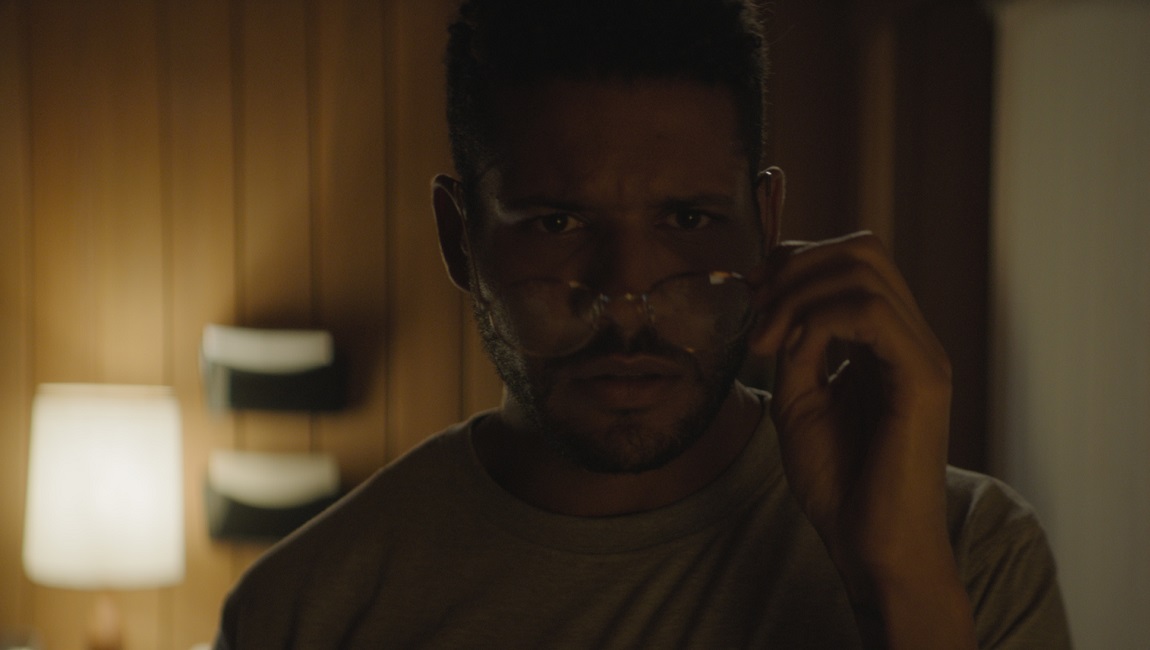The rare Shinya Tsukamoto film to not star the director himself, Shadow of Fire is his third consecutive period piece, following Fires on the Plain (2014) and Killing (2018). The film’s confrontational nature arguably begins with its first shot, a seemingly simple image of a woman sleeping that doesn’t quite resemble other period movies. It’s smooth and shiny, an aggressively digital image that makes the ruined tavern where she lives and works into something uncanny and untextured. Fires on the Plain and Killing similarly focused on using digital to break period piece conventions, but the former took place in the last days of World War II and the latter during Japan’s Edo period. In Shadow of Fire, WWII is newly over, and the ruins of a brutalized Japan are the stage.
Period pieces are typically not intended to look like Shadow of Fire (or the prior two Tsukamoto films). Shadow’s daytime scenes are a little too harsh and bright, and the film remains a chamber drama set in its one dingy location for the first half. The blown-out whiteness of this film’s windows recalls Yoshishige Yoshida’s Japanese New Wave classic Eros + Massacre, which took a similar aesthetic approach as commentary on the inescapable post-Hiroshima mood of Japan. War movies are also generally not meant to focus on characters who seem to have lost their identities entirely, even if the archetypes survive. We never learn the name of the woman at the start (played by the mononymous Shuri), but once we see her gloomily selling sex alongside what little food and drink she has to passers-by, we know everything we need. With one exception, nobody else in Shadow of Fire ever warrants a name: the other main character is a wily orphan (Ouga Tsukao) who lives with the woman and helps her to get by via theft, the latter serving as a makeshift mother in the first half. Two men enter the picture at separate times: a baby-faced soldier (Hiroki Kono) who plays makeshift father until his past trauma comes to the fore, and an older soldier (Mirai Moriyama) who wants the child’s assistance with his private revenge and who starts bringing names from an unseen past into the picture.
Tsukamoto’s breakout, Tetsuo: The Iron Man (1989), is certainly still his most influential film for kicking off the Japanese cyberpunk wave, and arguably his greatest. Despite being a body horror film and about 35 years older, it has a surprising amount in common with Shadow of Fire in its methods. Both films were clearly limited by their budgets and didn’t leave their primary locations too much as a result, and both used some of the cheapest tools available at the time for their unique properties, with the earlier work’s black-and-white 16mm film becoming digital cinematography. Tsukamoto also obscures violence, with Tetsuo’s monochrome blood turning into Shadow’s PTSD fits caused by offscreen gunshots. How the adult characters treat the child is the film’s preoccupation, but the youngster is frequently off-screen in his own right — even when he stops a confrontation, it’s framed with his arm suddenly appearing before he does. Both films are also short and atmospheric: narrative developments occur, but Tsukamoto prioritizes developing a bad-times atmosphere. The finest moment here involves a strange dream of a nighttime sequence that suddenly shifts to monochrome, showcasing debris and ash as the shot pulls out to a tableau resembling what was once a city on an island, now blasted into a necropolis.
Shadow of Fire isn’t quite as distinctive as Tetsuo, and its innovations are more technical and minor-key; even the aforementioned tableau is small-scale. Having such an archetypal approach to characterization is somewhat unusual, but far from unprecedented, and it gives the arc of the film a certain “hurt people hurt people” oversimplification. No one could accuse Tsukamoto of being dishonest by portraying post-war Japan so gloomily, and the film isn’t monotonous, but removing names and most backstories didn’t necessarily have to mean abandoning psychological specificity for the woman and the child. One also wishes the film didn’t end with the much-overused arthouse trick of the boy looking into the camera and then vanishing into a crowd.
The film is most interesting in its structural design. In addition to the thought-provoking decision to use digital photography, the storyline is shaped according to the contours of a minimalist diptych, with the boy and a gun he stole as the main points of recurrence in both parts. The two men reveal more layers as their respective portions of the film progress, and are thus more interesting as contrasting characters than the more static, passive parts of the woman and child. The dust dream and a subsequent confrontation provide the bridge taking us from a “feminine” domestic chamber piece to a “masculine,” revenge-driven road trip through no man’s land. Despite the change in settings, Tsukamoto’s own digital cinematography, the final score by composer Chu Ishikawa, and Masaya Kitada’s sound design are largely continuous with what came before, and a true escape was never going to be possible in a film like this. Elem Klimov’s classic Come and See is the obvious point of comparison, but where that film blew up the horrors of a child facing pure evil into a surreal apocalypse, Tsukamoto takes the hangover of a loss and shrinks it down to a parable made up of gloomy implications. Foremost among these is that the shadow of fire is inescapable and has its own corrosive burn.
Published as part of IFFR 2024 — Dispatch 1.







